An Ancient Design in a Modern Age
The lávvu served for centuries as portable housing for reindeer herders. Its practical, efficient design and cultural heritage are attracting new users across Scandinavia.
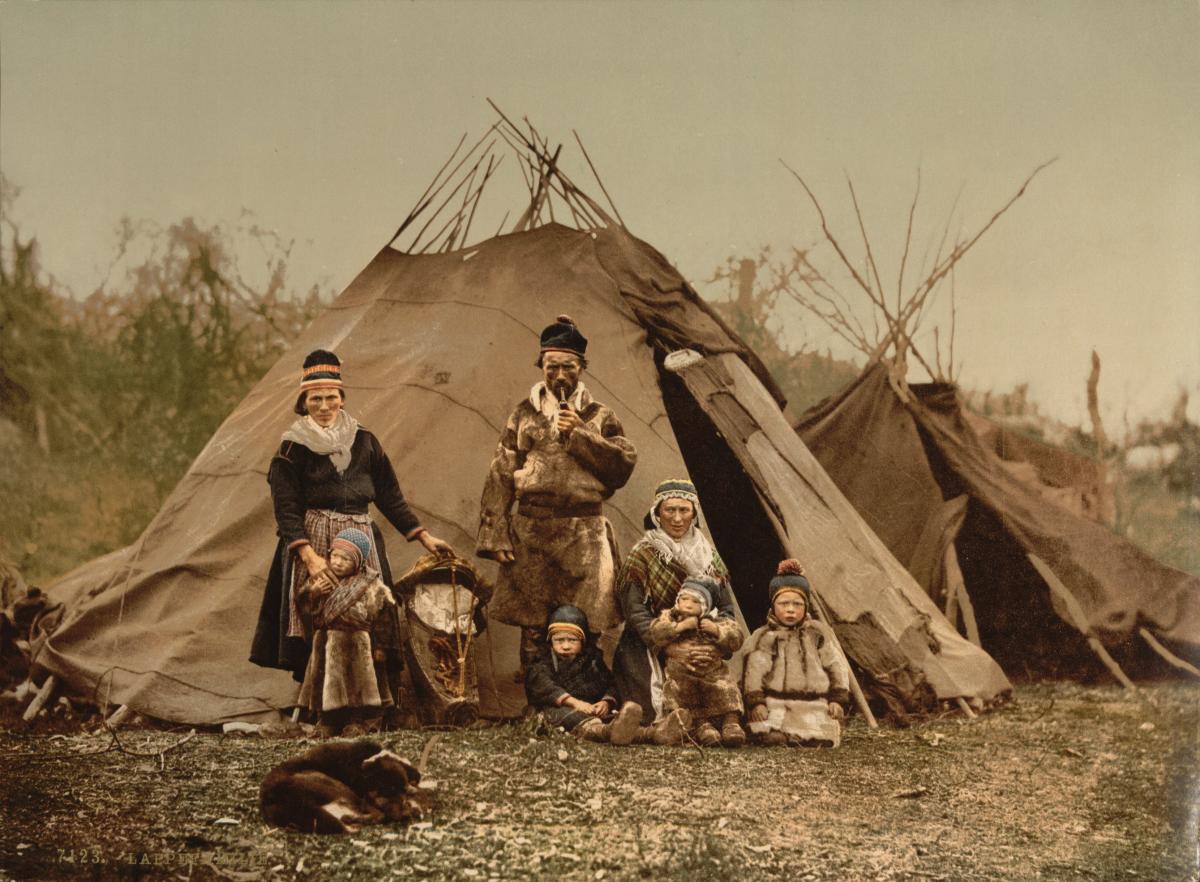
An indigenous Sámi family in front of its goahti, a larger, more elongated tent (in the foreground) and lávvu (in the background) in Kanstadfjord, Norway in 1896. (Photo: Unknown)
Cover photo: A lávvu frame silhouetted against the Northern Lights in Padjelanta National Park, Northern Sweden. Employing a wood-burning stove instead of a centre fire pit makes it easy to keep it heated even in the Arctic winter. (Photo courtesy of Picture Alliance)
Travellers who drive along the E6 through northern Norway soon encounter the lávvu. This traditional Sámi dwelling somewhat resembles the tipis of the North American Indians, but is built lower to the ground to withstand the fierce winds and sub-zero temperatures of the far north. Nevertheless, unlike its larger cousin, the goahti, it is a temporary structure, designed to be easily disassembled, transported and reassembled as the reindeer herds migrate across the tundra. Perfectly adapted to the needs of the semi-nomadic reindeer herders of the Arctic, this remarkably resilient design is enjoying a broader popularity throughout Scandinavia today.
Construction of the lávvu begins with three long poles whose top ends are notched or forked so that they interlock with each other. These poles form a sturdy tripod against which additional poles are laid to fill out the structure’s form. The walls, traditionally sewn together from reindeer hides, are today made of light, sturdy fabrics draped over the frame in such a way as to leave a smoke hole at the top and air vents at the bottom, since a fire burns in the centre of the lávvu to heat the interior and keep mosquitoes away. Freestanding and stable without requiring the use of stakes, guy ropes or a central pole, this simple, yet ingenious structure is extremely practical, energy-efficient and, at least in its original form, built wholly from locally available materials.
You seem to enjoy a good story
Sign up to our infrequent mailing to get more stories directly to your mailbox.This traditional dwelling of the Sámi people gained national fame in 1979 when a group of Sámi set up a lávvu outside the Norwegian parliament building in Oslo and went on a hunger strike to protest against the government’s plan to dam the Alta River in Finnmark. Since that day the lávvu has been more than just a ‘Sámi tent’; it is also a powerful symbol of Sámi culture and rights.
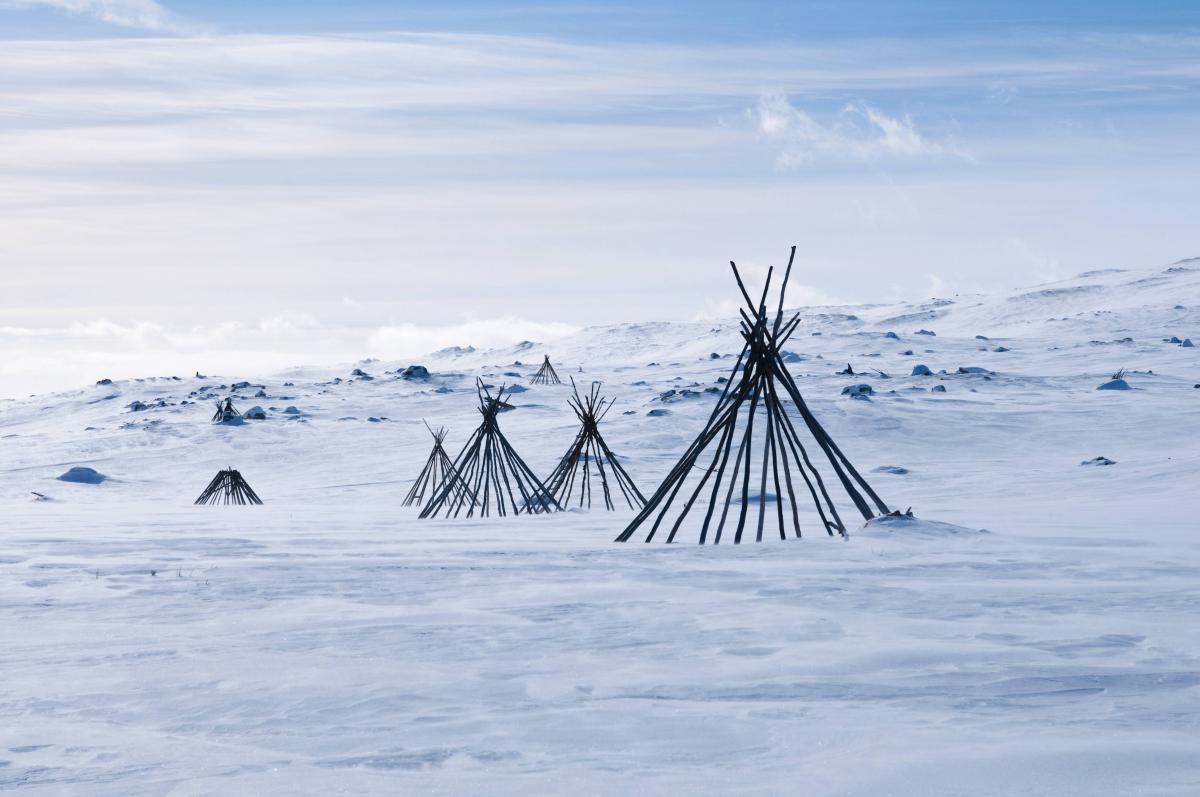
Frames for four lávvus and a food shelter on the Arctic tundra. With capacities of five to eight people per lávvu, this cluster of shelters could comfortably accomodate 20 or more people for longer periods of time. (Photo courtesy of Picture Alliance.)
Although this design has a documented history that reaches back at least 2,000 years, it still captures people’s hearts and minds, inspiring artists and anthropologists alike. In 2012 it was awarded the Architectural Prize of the North Norwegian Architects Association, selected for its functionality, but also for its spiritual and cultural significance. The award was accepted on behalf of the lávvu by councillor Marianne Balto of the Norwegian Sámi parliament, who noted that ‘the shapes and ways the lávvu was built represent important values for Sámi culture. The logical basic construction and the use of local materials reflect a culture that values practical knowledge and skills. The choice of materials, not always considered beautiful by aesthetic standards, shows the ability and will to adapt to the necessity for survival, something that is of the utmost importance in a culture based on self-reliance’.
More than just a functional shelter, however, the lávvu is also important as a gathering place, a structure that creates community. As Reider Breivik, a 72-year-old Norwegian teacher and lávvu enthusiast, says, ‘I fell in love with it in 1980 for its use as a social arena with people sitting in a circle inside, facing each other. The feeling is very similar to sitting around a campfire, and in a way, that is what you do in a lávvu. It creates a great atmosphere where everyone is equal. It is a structure people from all over the world will feel at home in. I once hosted colleagues from Kenya, and as soon as they entered the lávvu they said that it reminded them of their grandmother’s house. They ended up choosing to sleep there instead of in the house for the duration of their stay.’
For Herman Rundberg, the drummer of Violet Road, one of Norway’s most popular bands, the lávvu that his family puts up every year at the Riddu Riddu music festival is a connection to fundamental values: ‘I love the silence when you wake up in the lávvu on the tundra, or in the mountains, or at a festival camp. The sound of my father lighting the fire at dawn is a moment beautiful beyond words. I also really appreciate that even in these busy, fast-paced, modern times there is a place where you can do something as simple as sitting in a circle around a fireplace and just talking and feeling. It heals your soul and calms you.’
The traditional lávvu was well suited to the Sámi’s semi-nomadic life. The tundra provided the trees, branches and stones for its frame, and the reindeer herd provided the skins for its walls. Its simple construction and light weight made it easy to dismantle when moving with the herd and quick to reassemble again at the new campsite.
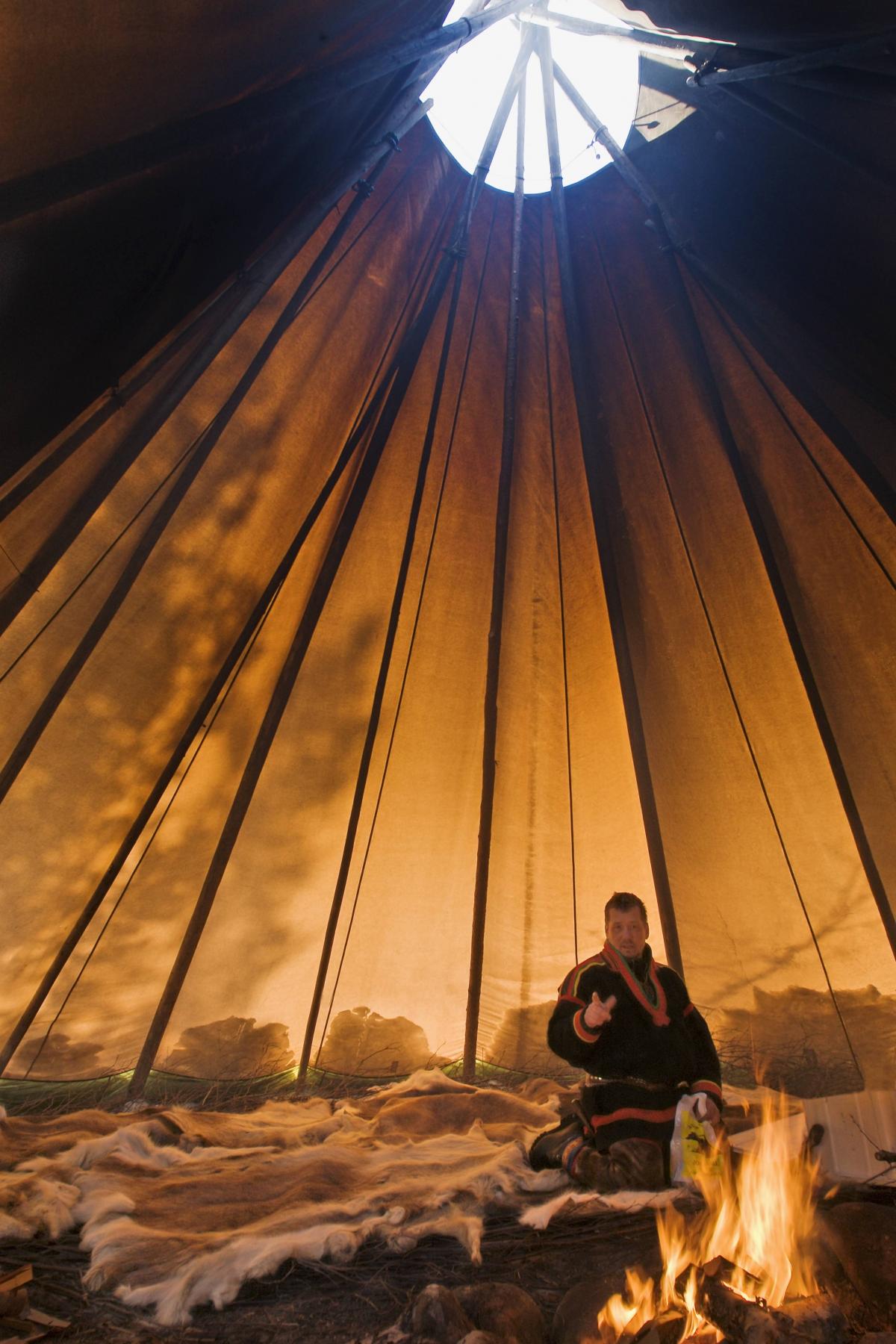
A Sámi man in traditional Sámi costume inside his lávvu. The floor is covered with several layers of birch twigs and a layer of reindeer skins. This efficiently separates the interior from the cold ground and keeps the lávvu dry and warm. The central fire pit is used for both cooking and heating, and smoke escapes through the top hole, which also functions as a skylight. (Photo courtesy of Picture Alliance.)
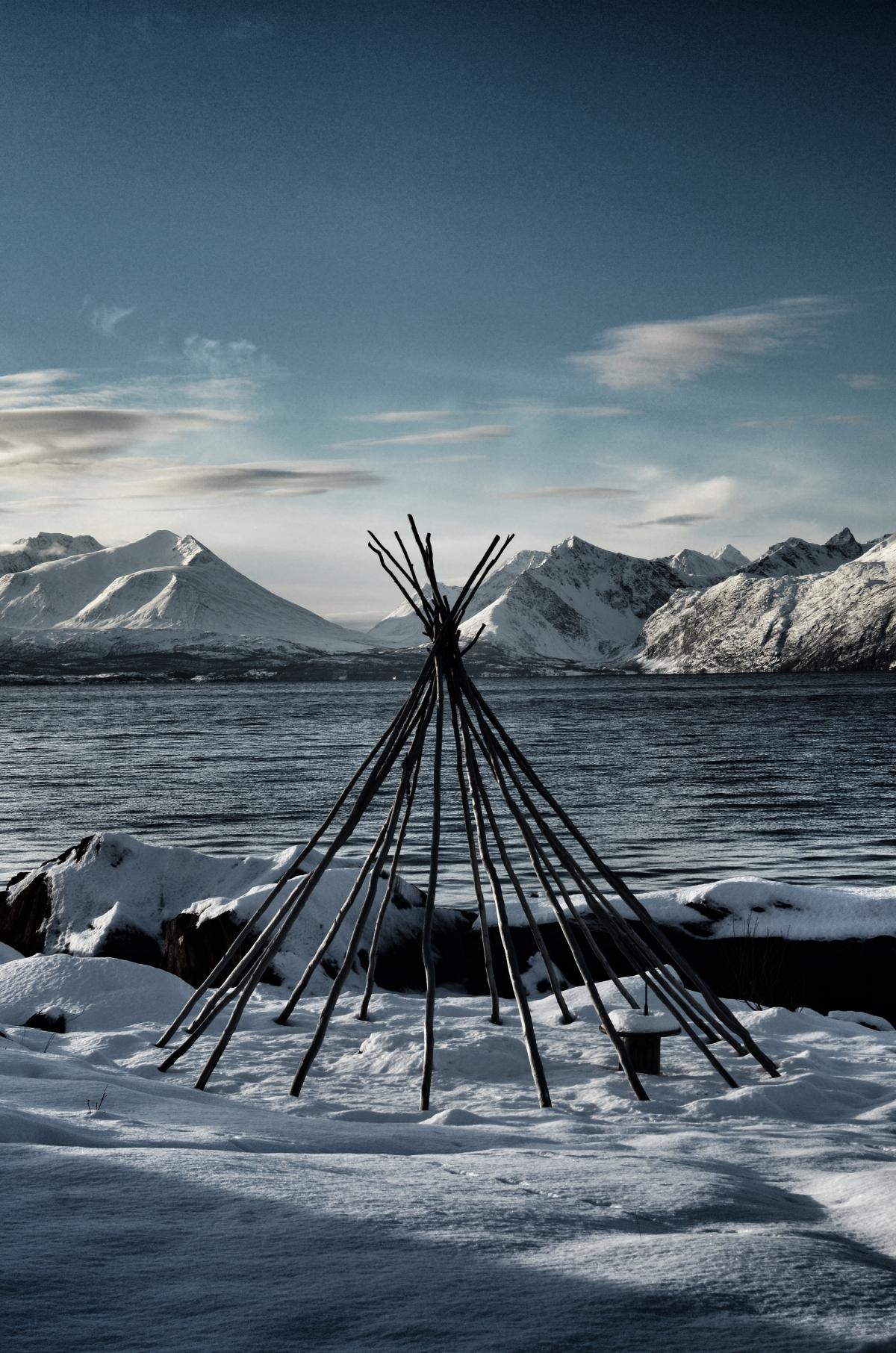
Lávvu frames are usually left standing year round and covered only in the seasons they will be used. The Lyngenfjord in the background has a long Sámi tradition and is known as the meeting point of three peoples: the Sámi, the Kven (immigrants from what is now Finland) and the Norwegians. (Photo: Per Kristian Bergmo)
Today the lávvu has been adopted by Scandinavians in general, and for the first time in history its popularity is growing beyond the Sámi community, whose view of the lávvu is somewhat more prosaic. John Henrik Eira (60), an assistant professor of Sámi culture with over 30 years of experience herding reindeer, remarks, ‘Personally I don’t have a romantic relationship with it. I grew up in a family of reindeer herders and to me it represents something we used temporarily, something we used out of necessity. When I was a child we had both a goahti and a lávvu, and it was the goahti that was our main shelter and our home. Of course the lávvu has been a blessing to us reindeer herders. First and foremost, it gave us very good protection against the elements. I especially remember all the times we were wet and cold, and came inside the lávvu to dry our clothes and warm up next to the fireplace. But even though I preferred to stay in the goahti, it was the lávvu that remained in use after reindeer herders began building cabins in the 1960s. We started using new models with new fabrics and foldable aluminium rods, but most importantly we started using small wood-burning stoves instead of a fire pit. This made it much easier to keep warm, and also used a lot less wood. Today we reindeer herders use the lávvu when we mark our herd, during the butchering and other work tending the herd in both summer and winter. For us it is mainly a shelter from the elements.’
New technologies and new materials, far from turning lávvus into relics from the past, have augmented their virtues and their appeal to a wide variety of new users. Fishermen and hunters alike in northern Scandinavia have adopted them. Lávvus can be spotted next to nearly every popular lake in high season, and a great number are also placed in strategic locations along hiking routes as shelters. They are popular at outdoor festivals of all kinds, and it isn’t unusual to see one behind a family home, serving as an extra bedroom in summer. Kindergartens and schools in the Arctic often have lávvus where stories are told and students are taught about Sámi culture. There are also several small villages scattered along the northern coast that have bought or made lávvus to be used as public meeting places. This renaissance has led to a growing market, and the number of specialised manufacturers in Scandinavia is increasing. But even as the fabrics and materials change, the basic design remains the same. The architectural masterpiece of the ancient Sámi of the north is still thriving, still finding new applications that its creators never dreamed of.
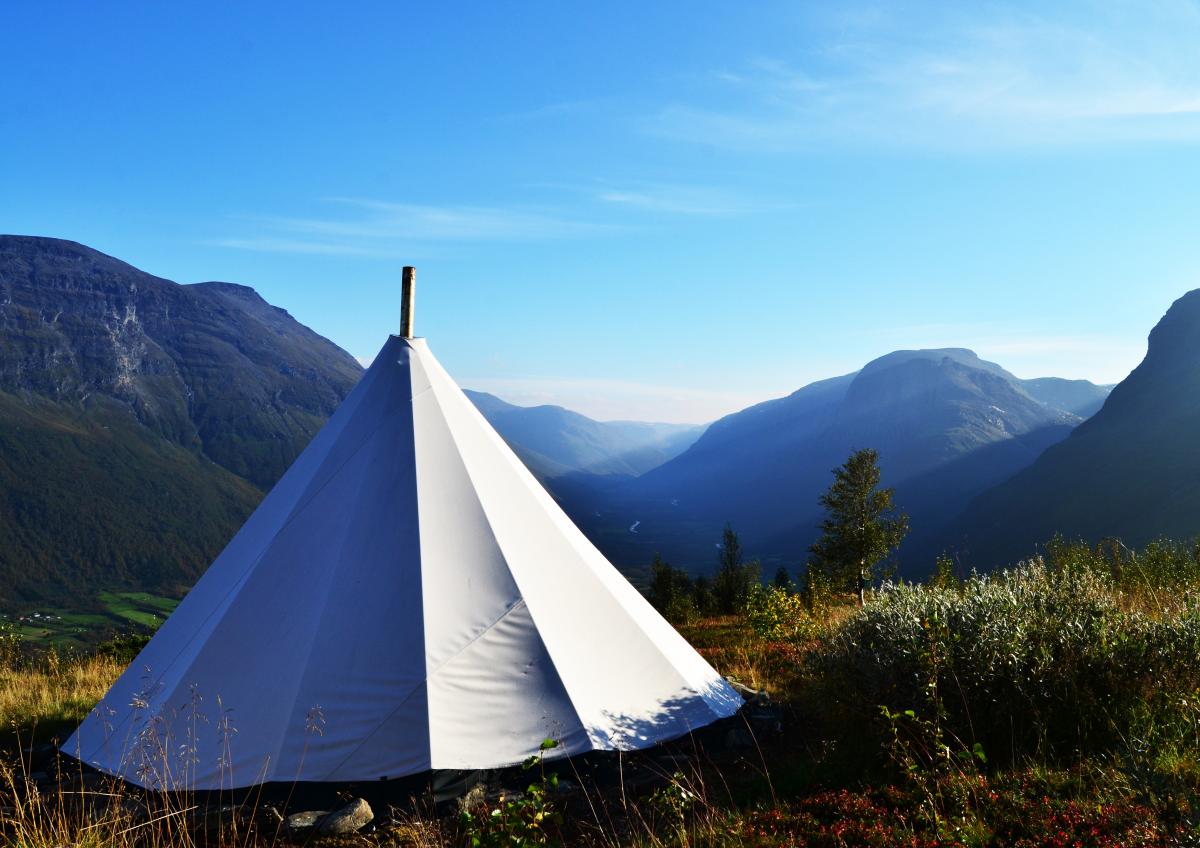
A lávvu on a hill next to a hiking path overlooking the Manndalen valley. This modern version features aluminum poles and synthetic fabric instead of wooden poles and reindeer skins. It also has a wood burning stove instead of a fire pit, as evinced by the stovepipe visible at the top. (Photo: Per Kristian Bergmo)

